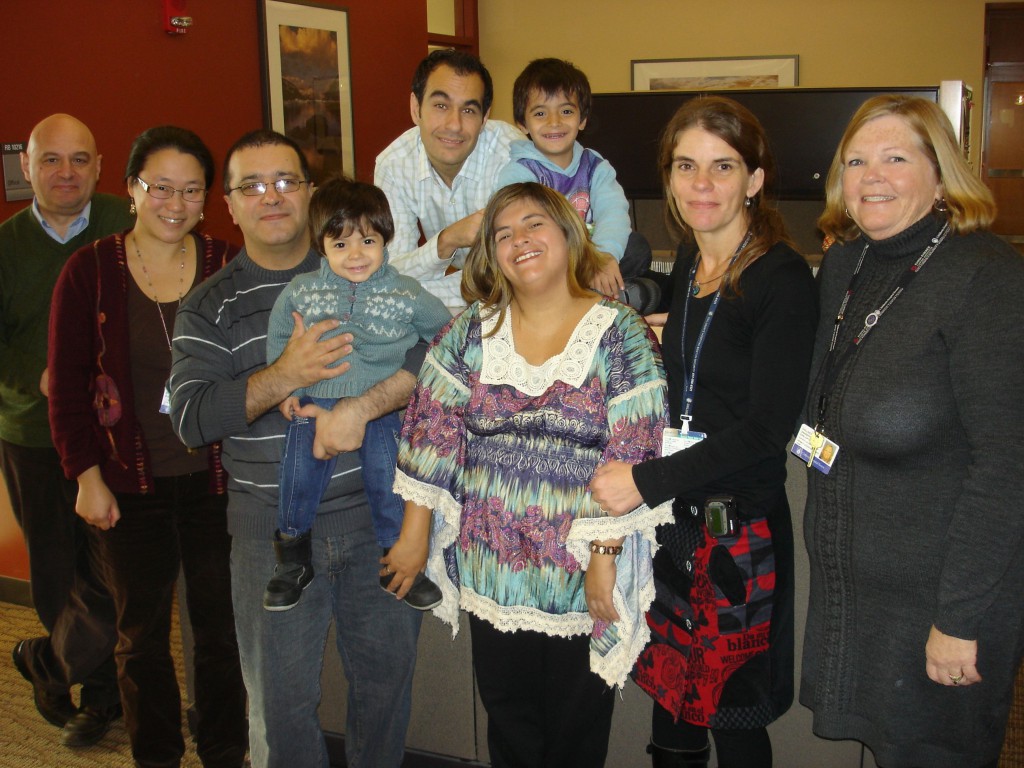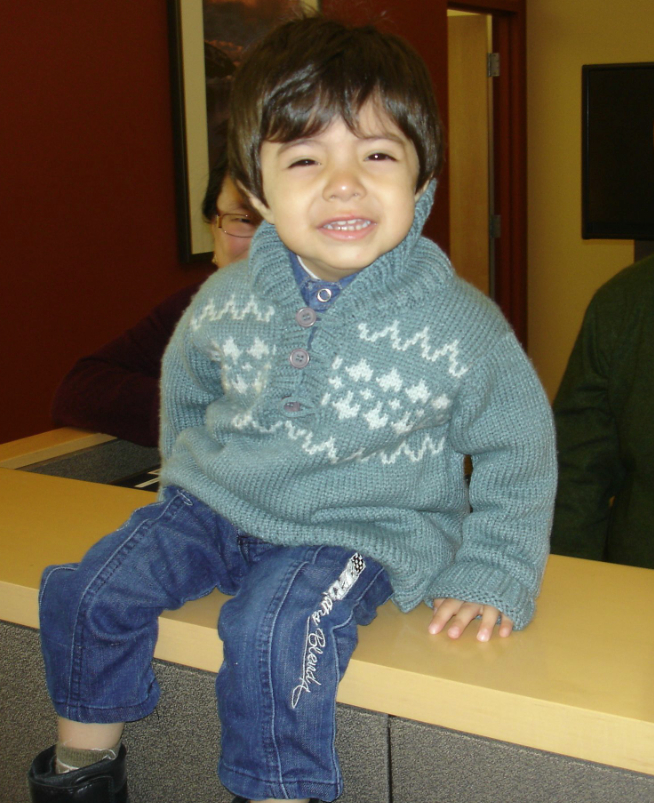For the Cáceres family of Argentina, it’s a joyous holiday homecoming. Agustín, who received gene therapy at 5½ months of age, journeyed with his family to Boston for a check-up and got a clean bill of health.
Agustín was born with the rare immune-deficiency disorder SCID-X1. More popularly known as “bubble boy” disease, it left him defenseless against infections, unable to make enough T-cells to fight them off. His baptism was the only time his family could come near him, all wearing masks, gloves and gowns. His infancy was spent in isolation with his mother.
Now, at age 2½, Agustín has been cleared to go to nursery school, ride a bus and attend large family gatherings without fear of contracting a life-threatening infection. When we caught up with him, he was chasing and tumbling with his older brother Jeremías while waiting to bid farewell to his care team.
“A year ago, he wouldn’t have been able to roll on the floor like this,” says Colleen Dansereau, BSN, RN, CPN, CPHON, Gene Therapy Project Manager for the Division of Hematology/Oncology at Boston Children’s Hospital. “He’s had a full immune reconstitution and his immune system is similar to yours and mine. He’s on no precautions.”
“He has a normal number of T-cells, and no SCID-related infections,” says Sung-Yun Pai, MD, of the Dana-Farber/Children’s Hospital Cancer Center (DF/CHCC), a co-investigator on the SCID-X1 trial. “He’s growing and thriving developmentally, and living a normal life.”

Agustín (front row), his parents and care team gather for a final farewell. (L-R Luigi Notarangelo, MD; Sung-Yun Pai, MD; Alberto Cáceres; Agustín; Hernan Santana (financial manager, Hematology/Oncology), Marcela Cáceres; Jeremías; Spanish interpreter Carola Plotkin; Colleen Dansereau.) Not pictured: David Williams, MD, PhD, trial director.
Agustín has also gone off IV immunoglobulin, which he was receiving since he was unable to make his own antibodies. With his T-cells rebounded, his immune system was normal enough to try vaccinating him. He’s just received his 3rd dose of infant vaccinations.
“We had to treat him like a baby,” says immunologist Luigi Notarangelo, MD, principal investigator on the study. “We now have to see if he’s capable of making antibodies in response to the vaccine. We’ll know better in about a month.”
Agustín was the first U.S. participant in an international gene therapy trial, led by David Williams, MD, chief of DF/CHCC’s Hematology/Oncology division. A second boy, from Chile, was treated at the hematopoietic Stem Cell Transplant unit last May, at 10 months of age. He went home in October in good health and will continue to be monitored by the gene therapy team and his Chilean doctors.
Other gene therapy trials are planned. A trial for Wiskott Aldrich syndrome will soon enroll its first patient, and trials for sickle-cell disease, adrenoleukodystrophy (the “Lorenzo’s oil” disease) and acute lymphoblastic leukemia are preparing to launch in the next year. If they do as well as Agustín has so far, we may be looking at an era where patients can not only live with these diseases, but be cured.







